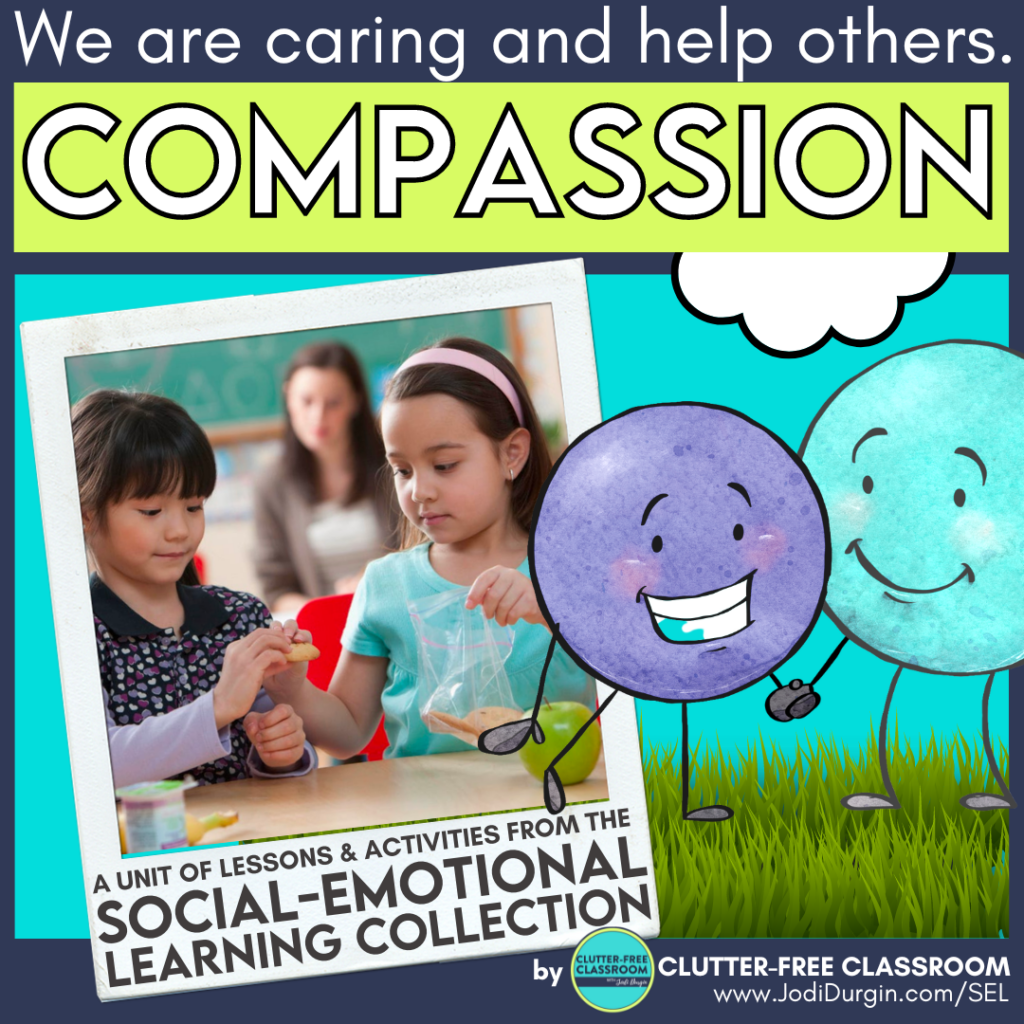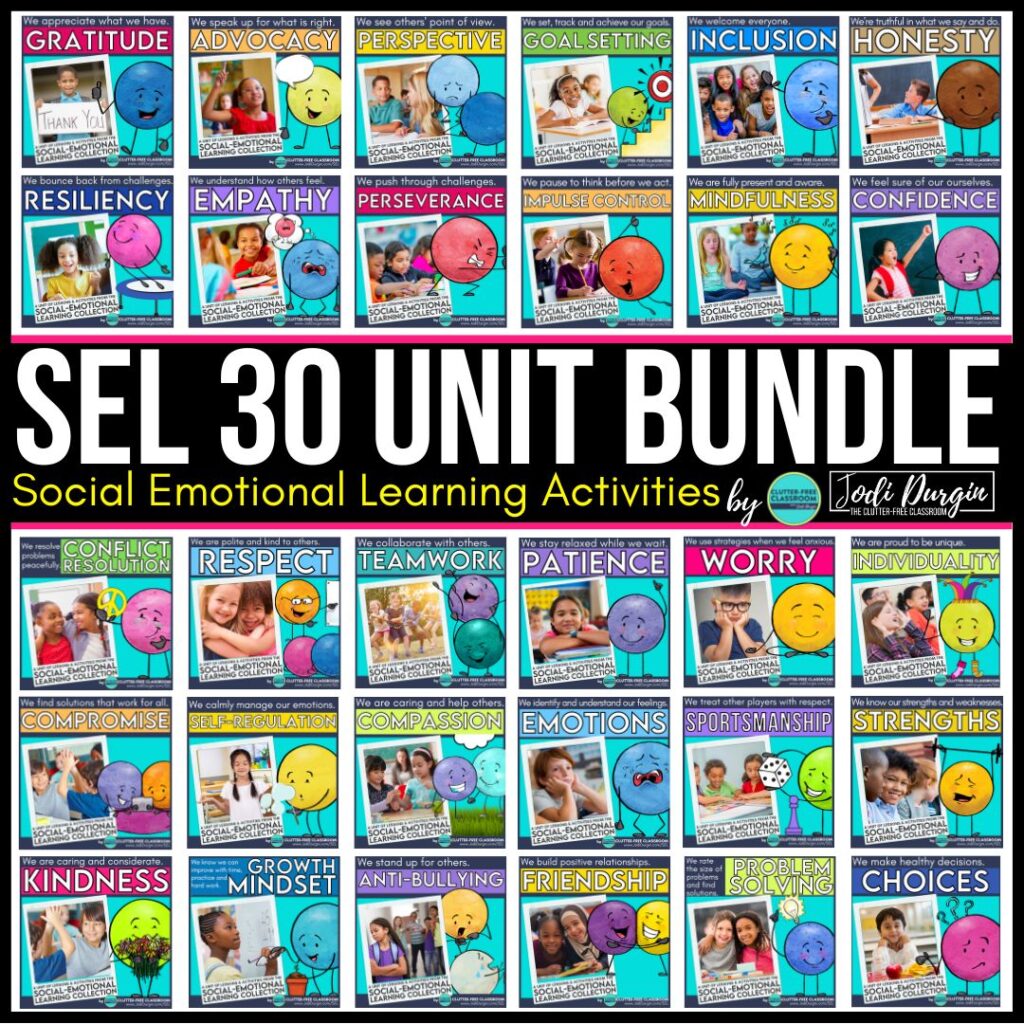If you are an elementary teacher looking to learn how to help your students be compassionate, then you found the right place! Developing compassion skills prepares kids to understand when people are feeling sad or upset and respond appropriately. Students who are compassionate are kind to others and care about the feelings of others. In this post, we’ll go into detail about what compassion is and why it’s important. In addition, we’ll share tips and ideas for teaching compassion in an elementary classroom setting. Read all about helping students be compassionate in and out of the classroom below!
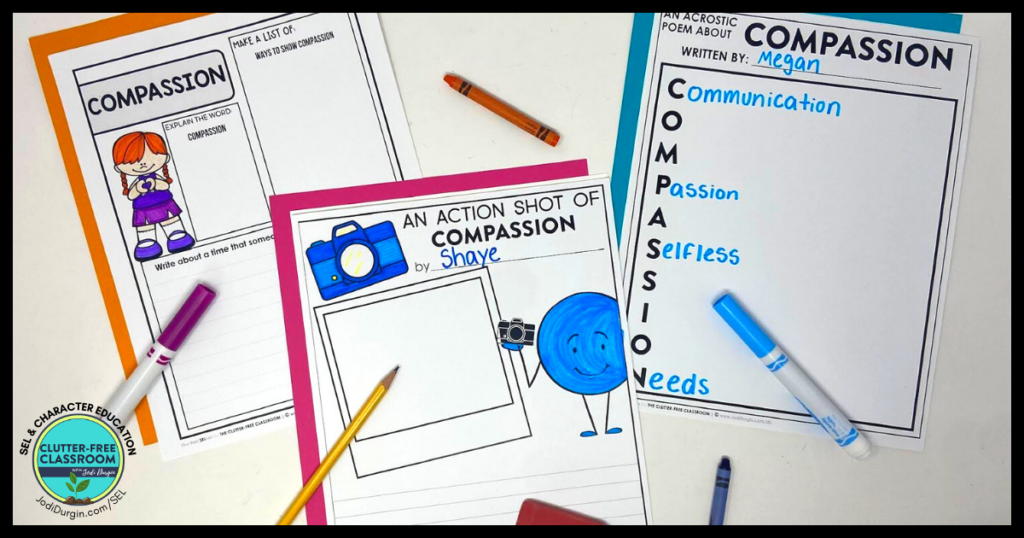
What Does Compassion Mean?
Compassion means caring about others and treating them with kindness. When people are compassionate they understand when others are feeling sad, upset and down in the dumps. In other words, feeling blue. People who are compassionate want to help those who are upset or in need.
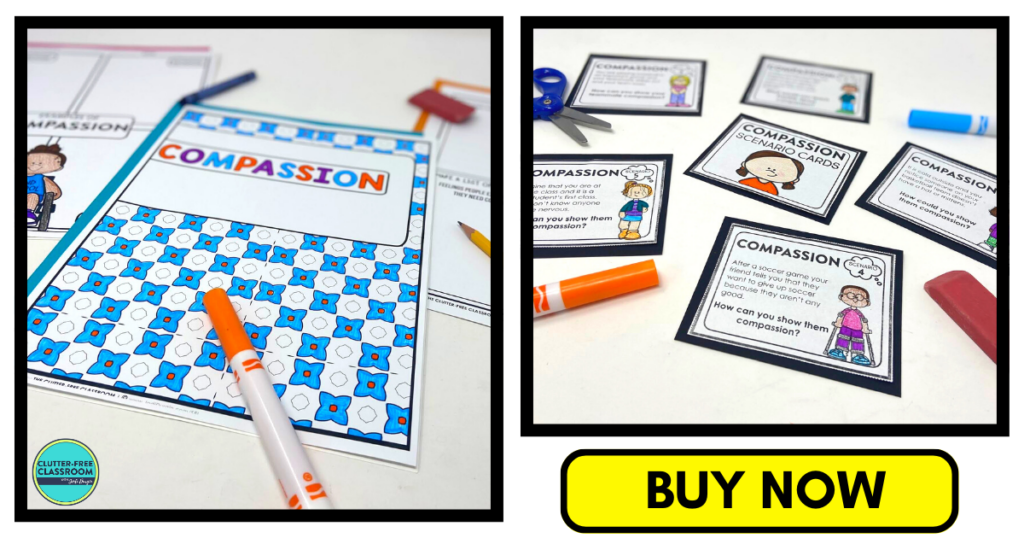
Why is it Important for Kids to be Compassionate?
It is important for kids to be compassionate because it helps them better understand each other. They will be able to notice when a classmate is upset and they will want to do something to help them. Kids who have compassion are kind because they wouldn’t want to upset another person since they are thinking deeply about how they feel.
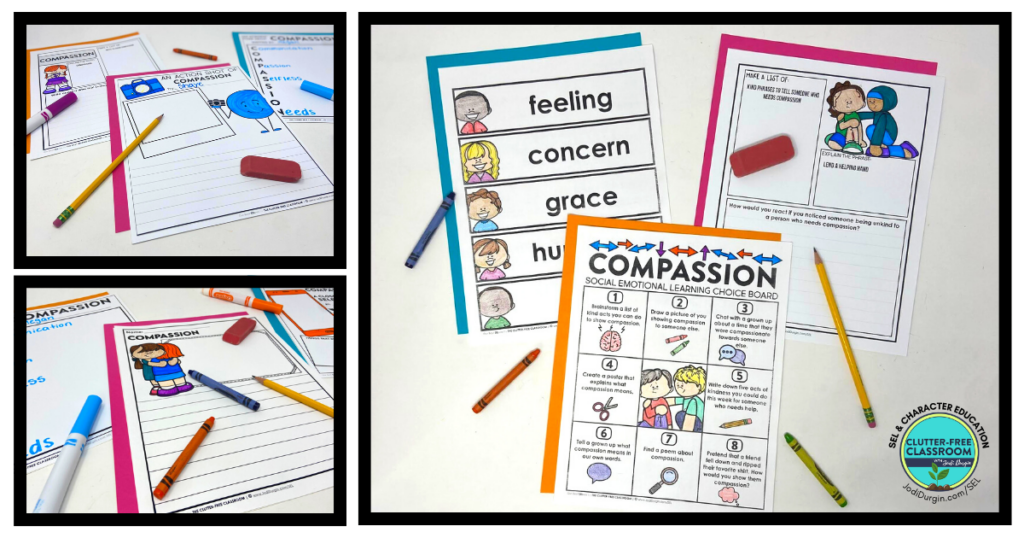
How Do I Know If I Need to Teach Compassion in My Classroom?
The students in your 1st, 2nd, 3rd, 4th or 5th grade classroom would benefit from compassion lessons and activities if any of these statements are true:
- Students are using unkind words.
- Bullying or teasing has become a problem in your classroom.
- Students aren’t mindful of other people’s feelings.
- The overall moral of your classroom is struggling.
- Students aren’t using manners.
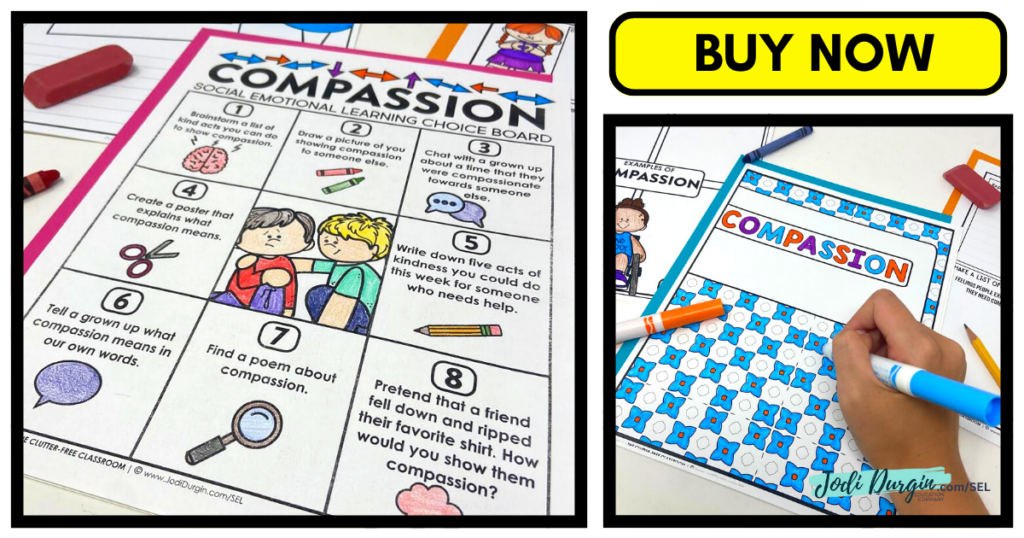
3 Reasons To Promote Compassion In Your Elementary Classroom
Below are 3 reasons to promote compassion in your elementary classroom.
1. Students will be kinder to each other.
Promoting compassion in your classroom will make students be kinder to each other because they will be thinking about the feelings of others. They will consider how their words and actions will affect other people. They won’t want to use words that would make someone upset.
2. Students will help each other.
Students who are compassionate have a desire to help those in need. When you promote compassion in your classroom you will notice that students are more likely to help each other and try to cheer each other up. Students will look for ways to be helpful.
3. Students will practice empathy.
Teaching compassion naturally helps students practice using empathy. Empathy is understanding how another person feels. When you are compassionate you combine the understanding you get from empathy and take it one step further to help the person or group of people who are upset or struggling. A common saying is that compassion is empathy in action.
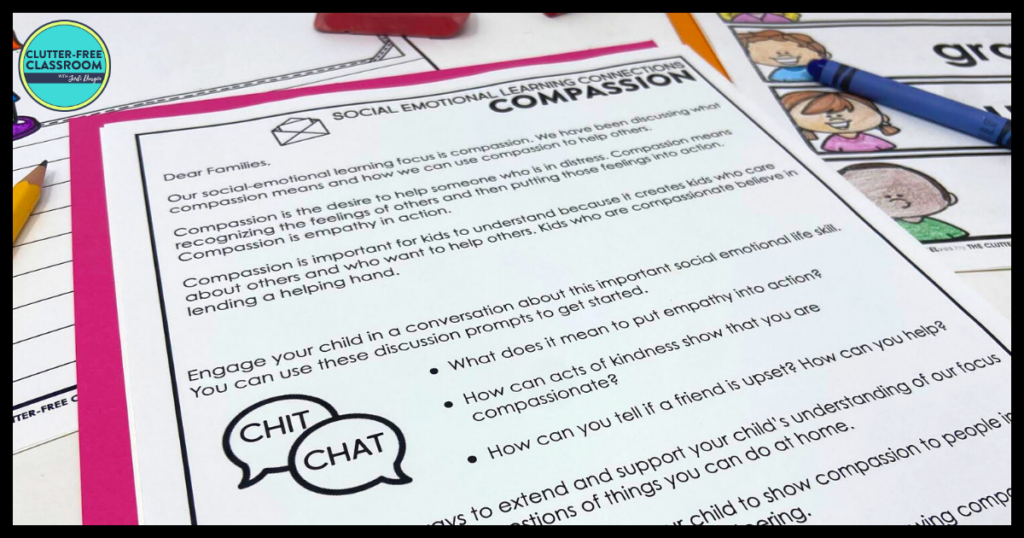
5 Tips and Ideas for Teaching Compassion
Below are 5 tips and ideas for teaching compassion in the classroom.
1. Read Aloud Picture Books about Compassion
Picture books are a great way to introduce and teach an SEL topic. It gets students thinking about the topic and activating their background knowledge. Check out this list of picture books for teaching compassion!
2. Watch Videos about Compassion
There are tons of free online videos out there that promote social emotional learning. It’s a fun and engaging way to teach SEL skills that your students will enjoy. Check out these videos for teaching compassion!
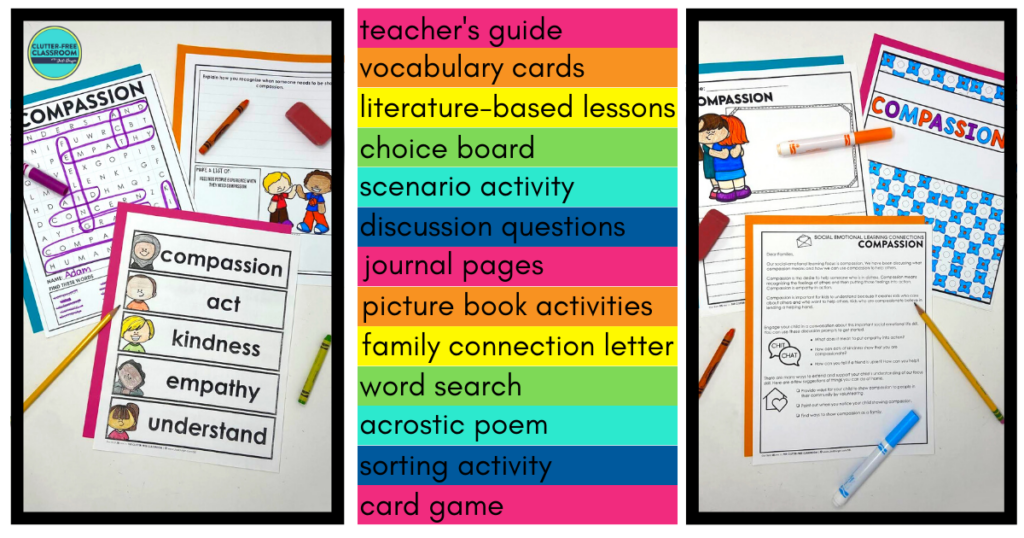
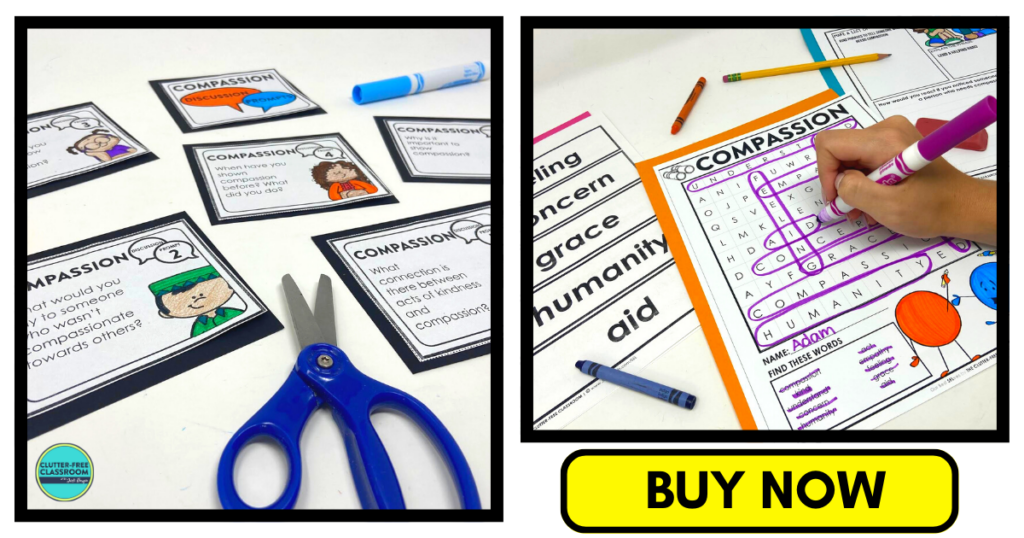
3. Explicitly Teach Vocabulary Related to Compassion
Vocabulary words can help students develop understanding of compassion and create connections through related words. Our compassion SEL unit includes ten vocabulary cards with words related to the SEL topic. It is important for students to be able to see, hear, and use relevant vocabulary while learning. One idea for how to use them is to create an SEL word wall as students learn the words.
4. Provide Practice Opportunities
When learning any skill, students need time to practice. Social emotional learning skills are no different! Our compassion SEL unit includes scenario cards, discussion cards, choice boards, games, and much more. These provide students with opportunities to practice the skills independently, with partners or small groups, or as a whole class.
5. Integrate Other Content Areas
Integrating other content areas with this topic is a great way to approach this SEL topic. Our compassion SEL unit includes reading, writing, and art activities.
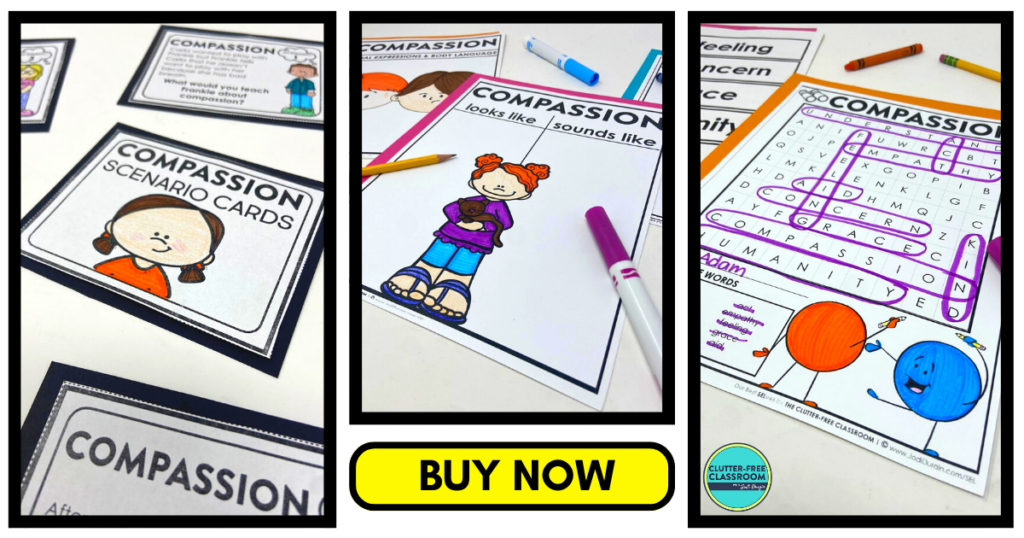
Skills Related to Compassion
Compassion is a central concept within social emotional learning (SEL) or character education that refers to showing empathy, care, and understanding towards others. While “compassion” is the commonly used term, there are other words and phrases that can convey a similar meaning. Here are some alternative words used in the context of compassion:
- Empathy: The ability to understand and share the feelings of others.
- Kindness: Demonstrating goodwill, generosity, and benevolence towards others.
- Caring: Showing concern, support, and affection for others’ well-being.
- Sympathy: Understanding and sharing the feelings of someone in distress.
- Altruism: Selfless concern for the well-being and happiness of others.
- Benevolence: The desire to do good and promote the welfare of others.
- Understanding: Showing comprehension, patience, and tolerance towards others’ experiences and perspectives.
- Humanity: Recognizing and valuing the inherent worth and dignity of all individuals.
- Love: Expressing deep affection, care, and warmth towards others.
- Consideration: Taking others’ needs, feelings, and circumstances into account when making decisions or taking action.
These terms capture the essence of compassion and reflect the values of understanding, empathy, and care for others within the context of social emotional learning (SEL) or character education.
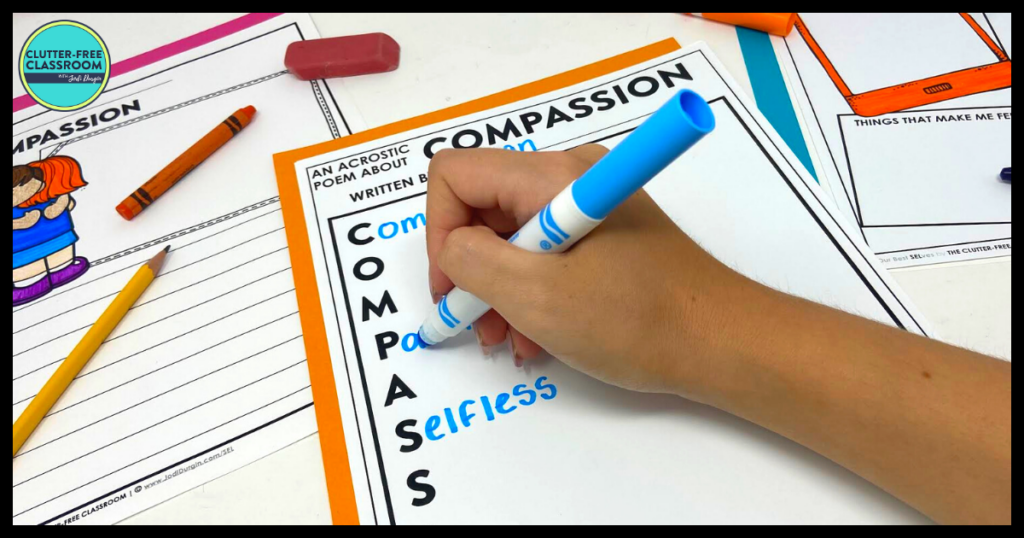
Download the SEL Activities
Click an image below to either get this individual compassion unit or get ALL 30 SEL units!
In closing, we hope you found this information about teaching compassion in the classroom helpful! If you did, then you may also be interested in these posts.

